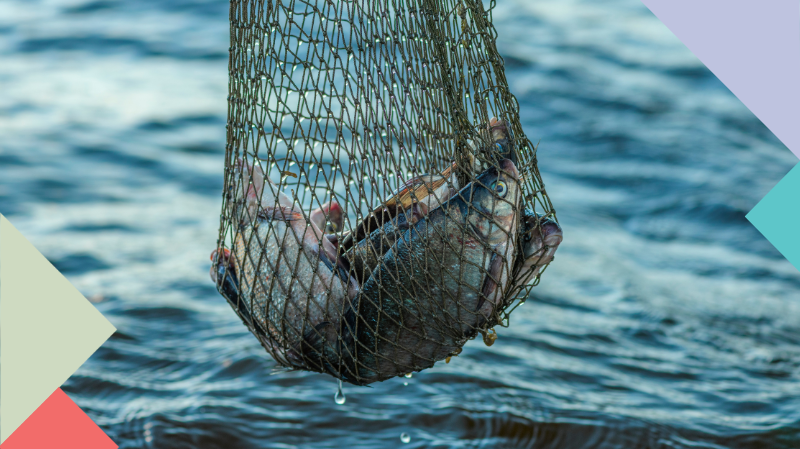Illegal, unreported and unregulated (IUU) fishing continues to pose a serious threat to marine ecosystems and the livelihoods of coastal communities. In response, the European Union, United States, and Japan―three of the world’s major seafood importers representing 58% of global seafood imports―have implemented Import Control Rules (ICRs). These Rules aim to prevent the entry of illegal, unreported or unregulated fish into their markets. They have been designed to incentivize compliance with fisheries regulations along international supply chains and to level the playing field for their domestic fishing fleets.

Itad’s research on ICRs, supported by the Walton Family Foundation, assessed how these rules are working and what could be improved. Using a systems-based approach, we mapped ICR design and implementation, and examined their real-world effects in three exporting countries (Ghana, Indonesia and Peru). We asked: What changes are ICRs making in terms of IUU fishing? Here’s what we found:
Positive impacts
Improved governance: ICRs have driven better fisheries oversight in export-oriented countries. The EU regulation’s carding system, in particular, has incentivized major changes in exporting nations where the EU is their primary market. By assessing non-EU nations’ efforts to combat IUU fishing, the EU can issue yellow cards as warnings and red cards that ban seafood imports. Our research indicates that the EU’s carding system as a sanctioning process creates very strong political and economic incentives for countries to strengthen their laws and enforcement to maintain access to the lucrative EU market.
Behaviour change: ICRs are positively influencing the behaviour of fishers with consistent evidence that ICRs are making IUU fishing more risky and less financially attractive. For example, in Ghana, higher fines and stronger penalties have reduced the number of fishers using illegal gear or violating quotas.
Policy reform: Many of the main fish exporting countries targeting markets with ICRs have initiated significant policy reforms. These improve fisheries governance as well as strengthening traceability systems and national monitoring frameworks in response to compliance requirements. Key policy reforms include the banning of transshipment at sea and increasing the coverage of vessel monitoring systems.
Catalysing domestic momentum: In several case studies (e.g. Ghana, Indonesia and Peru), ICRs have helped create the political space for reform by aligning government, industry, and civil society interests. The pressure of potential trade restrictions or reputational damage gave reform advocates greater leverage within their national contexts.
Challenges
Market fragmentation and operational burdens: Divergent requirements across the EU, US, and Japan ICRs create operational inefficiencies and impose disproportionate compliance costs, particularly on exporters serving multiple markets. The EU ICR covers virtually all marine species and requires detailed data points such as vessel identity, gear type, catch location, and processing details. In contrast, the US Seafood Import Program and Japan’s ICR apply to a limited subset of species and / or require fewer data elements, leading to inconsistencies that complicate compliance for exporters. Some exporters, particularly in Ghana and Peru, have increasingly shifted trade toward less-regulated markets like China. In 2023, China overtook the EU as Ghana’s largest seafood export market.
Unequal access for small-scale fishers: Larger industrial fishing operators are generally better equipped to meet ICR requirements such as electronic traceability and vessel monitoring systems. In contrast, small-scale fishers often lack the capacity, infrastructure, and institutional support needed to comply. Without targeted support and inclusive policy design, ICRs could inadvertently marginalize artisanal fishers, reinforcing existing inequalities in access to global seafood trade.
Regulatory gaps: Some major markets, like China, are not subject to import control regulations (ICRs), leaving substantial avenues open for countries or companies to export seafood outside of the stricter compliance requirements of ICRs and avoid stricter compliance requirements.
Digital traceability as an emerging trend: The rollout of systems such as CATCH (the EU’s electronic catch certification system) will enhance data centralization and traceability for importing countries. For exporters, the adoption of digital tools like electronic logbooks (e-logbooks) and vessel monitoring systems (VMS) offers significant potential to improve oversight, transparency, and compliance. However, progress remains uneven. Many exporters face challenges in scaling up these systems, with gaps in connectivity, training, and investment slowing full implementation.
Recommendations for policy and practice
- Scope and scale: the US, Japanese and future ICRs should expand to cover more species and strengthen enforcement mechanisms and consequences for violations increasing the sanctions of non-compliance through an EU like carding system .
- Formal engagement & technical support: Future ICRs, as well as the US and Japanese ICRs, should strengthen their impact by increasing formal engagement with exporting governments, and offering technical support to improve national-level fisheries management capacity.
- Alignment: Closer coordination among the EU, US, and Japan and other countries developing ICRs will ensure complementary and harmonization. This will reduce compliance burdens by standardizing documentation requirements and verification processes, lowering barriers for exporters and improving access for small scale fishers.
- Small-scale producers: Targeted donor and NGO support is required to ensure that small-scale operators can access training, technology, and infrastructure needed to meet ICR requirements.
- Investment: Support digital traceability and electronic reporting systems through investing in infrastructure, capacity building and subsidized access for small scale fishers.
- Evidence: Build the evidence base for effective, scalable solutions to supply chain monitoring by supporting pilot projects with robust monitoring and evaluation, developing feedback loops between policy and implementation and tracking outcomes beyond compliance.
Broader systems change remains vital for success
ICRs represent a powerful, market-based mechanism for tackling IUU fishing. However, their effectiveness depends on the scope, inclusiveness, coherence, and adaptability of their design. The effectiveness of trade-based interventions hinges not only on technical design, but also on broader systems change. Ensuring that trade rules contribute to equitable and sustainable seafood supply chains requires coordinated action by policymakers, industry stakeholders, civil society and development partners.

